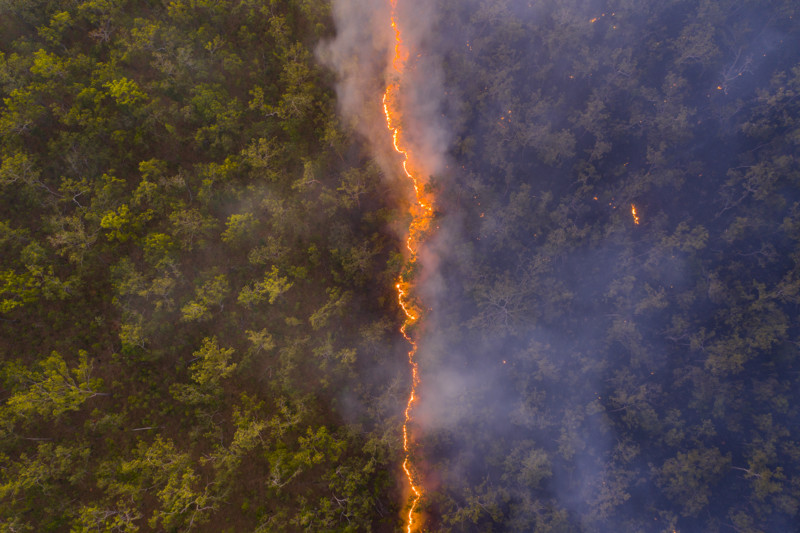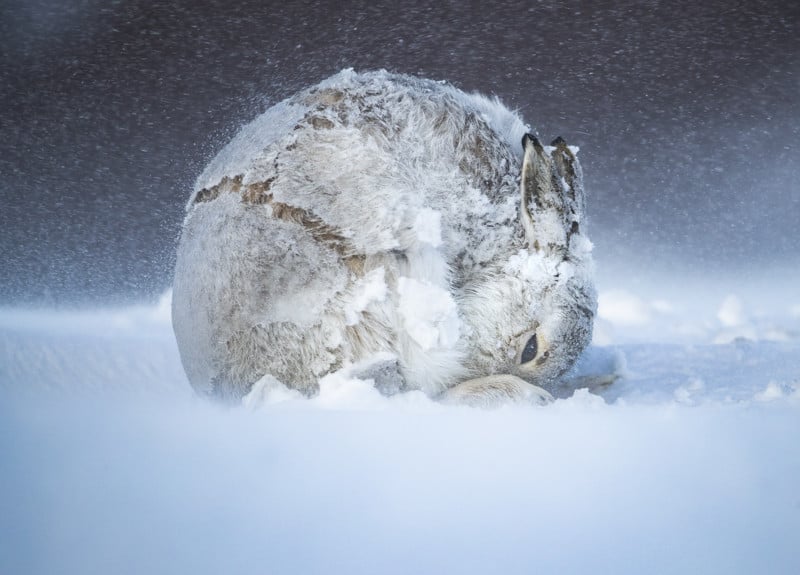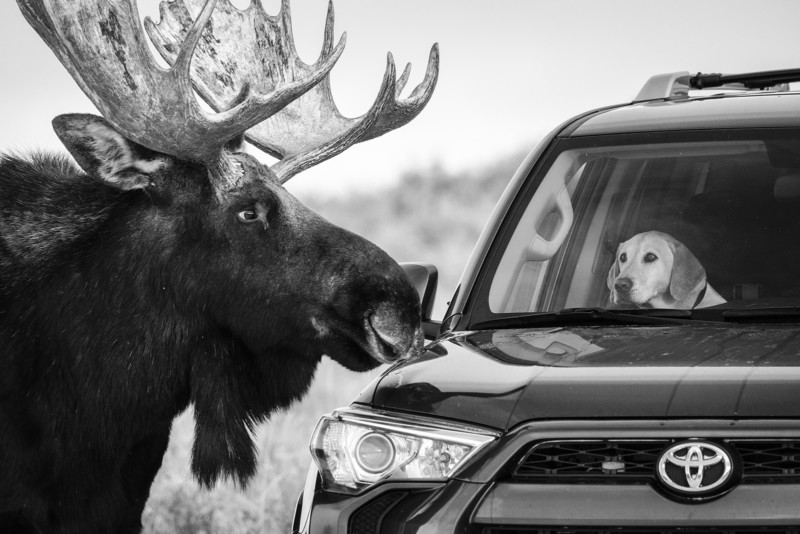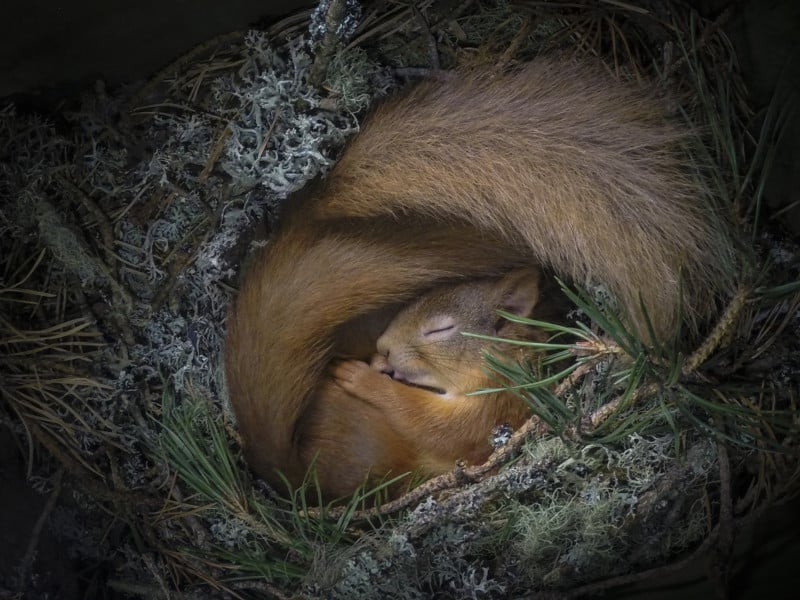
![]()
In December, the National History Museum in London announced the finalists for the People’s Choice Award. Today the winner has been crowned thanks to over 55,000 votes from around the world.
The winning image is titled “Bushfire” shot by Robert Irwin and depicts the devastating wildfires that tore through Northern Australia last year.



Winner 2020, Wildlife Photographer of the Year People’s Choice Award
A fire line leaves a trail of destruction through woodland near the border of the Steve Irwin Wildlife Reserve in Cape York, Queensland, Australia. The area is of high conservation significance, with over 30 different ecosystems found there, and is home to many endangered species. The fires are one of the biggest threats to this precious habitat. Although natural fires or managed burns can be quite important in an ecosystem, when they are lit deliberately and without consideration, often to flush out feral pigs to hunt, they can rage out of control and have the potential to devastate huge areas.
The Natural History Museum describes the images’ capture:
After spotting smoke billowing out of the horizon, Robert knew he had a prime opportunity. Launching his drone, he sent it straight over to the location of the fire. With only a few minutes of battery left, he knew he had to act fast. Taking it right into the thick of the smoke, he managed to frame a clear 50:50 shot, with a pristine natural conservation area on one side juxtaposed with the blackened, devastated remains on the other. Taken near the Steve Irwin Wildlife Reserve in Cape York, Queensland, the area is of high conservation value and is home to over 30 different ecosystems with many endangered species.
Irwin’s image was chosen from a shortlist of 25 finalists that received a total of 55,486 votes since they were revealed in early December. Those 25 finalists were whittled down from over 49,000 total images submitted to the annual competition. Irwin’s photo will be accompanied by four other images from the finalists which have been categorized as “Highly Commended” and will be on display in the Wildlife Photographer of the Year exhibition at the National History Museum in London when it reopens. The exhibit will be open until August 1, 2021.
“The four ‘Highly Commended’ images that won over nature photography enthusiasts include Ami Vitale’s heartwarming portrayal of a bond between ranger and rhino in ‘The last goodbye’, the wonderfully composed wintry portrait ‘Hare ball’ from Andy Parkinson, an innovative remote capture of two squirrels in ‘Drey dreaming’ from Neil Anderson and a ‘Close encounter’ between a worried-looking Labrador in a car and an enormous moose taken by Guillermo Esteves,” the organization writes.



Highly commended 2020, Wildlife Photographer of the Year People’s Choice Award
Joseph Wachira comforts Sudan, the last male northern white rhino left on the planet, moments before he passed away at Ol Pejeta Wildlife Conservancy in northern Kenya. Suffering from age-related complications, he died surrounded by the people who had cared for him. With every extinction we suffer more than loss of ecosystem health. When we see ourselves as part of nature, we understand that saving nature is really about saving ourselves. Ami’s hope is that Sudan’s legacy will serve as a catalyst to awaken humanity to this reality.



Highly commended 2020, Wildlife Photographer of the Year People’s Choice Award
Andy spent five weeks watching the mountain hares near Tomatin in the Scottish Highlands, waiting patiently for any movement – a stretch, a yawn or a shake – which typically came every 30 to 45 minutes. As he watched, frozen and prostrate, with 50 to 60 mph winds surging relentlessly around him, the cold started to distract and his fingers clasping the icy metal camera body and lens began to burn. Then relief came as this little female moved her body into a perfect spherical shape. A movement of sheer joy. Andy craves such moments: the isolation, the physical challenge and, most importantly, time with nature.



Highly commended 2020, Wildlife Photographer of the Year People’s Choice Award
The worried-looking expression on this dog’s face speaks volumes and is a reminder that moose are large, unpredictable, wild animals. Guillermo was photographing moose on the side of the road at Antelope Flats in Grand Teton National Park, Wyoming, USA, when this large bull took an interest in the furry visitor – the driver of the car unable to move it before the moose made its approach. Luckily, the moose lost interest and went on its way after a few moments.



Highly commended 2020, Wildlife Photographer of the Year People’s Choice Award
As the weather grew colder, two Eurasian red squirrels (only one is clearly visible) found comfort and warmth in a box Neil had put up in one of the pine trees near his home in the Scottish Highlands. In the colder months, it’s common for the squirrels, even when unrelated, to share dreys. After discovering the box full of nesting material and infrequent use, Neil installed a camera and LED light with a diffuser on a dimmer. The box had a lot of natural light so he slowly increased the light to highlight his subjects – and using the WiFi app on his phone he was able to take stills from the ground.
You can see the full list of last year’s winners here as well as the 25 finalists for the People’s Choice Award here.
Open to photographers of all ages, nationalities, and abilities, the next Wildlife Photographer of the Year competition opens for entries on October 19, 2020. Important new categories focussing on people’s impact on the planet and the new jury have been announced.

